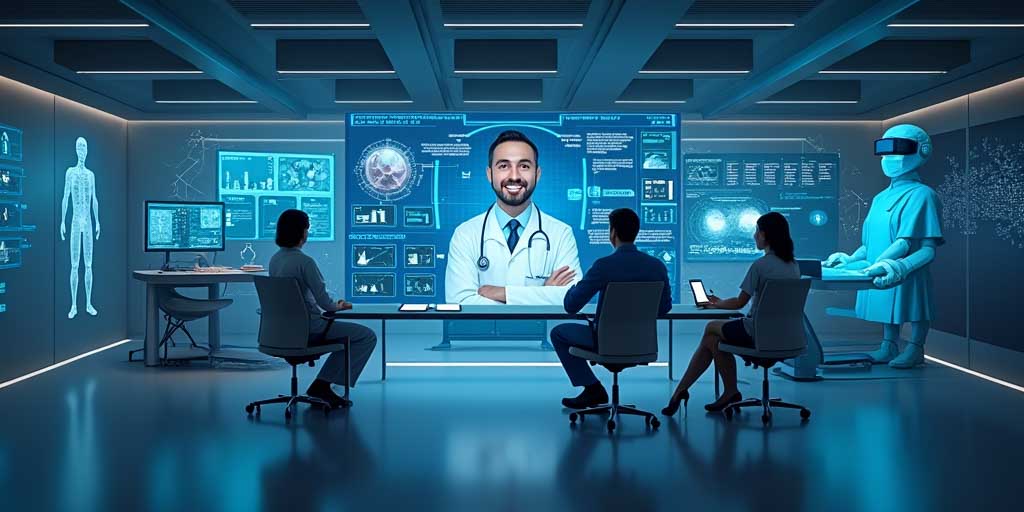Cutting-Edge Healthcare Innovations Set to Enhance Patient Care in 2025
The healthcare industry is on the brink of a transformation, with groundbreaking innovations poised to significantly enhance patient care by 2025. Technological advancements are set to revolutionize the way healthcare providers diagnose, treat, and manage diseases, improving outcomes and patient experiences. This post explores some of the most promising healthcare innovations that are expected to be implemented by 2025.
1. Telemedicine and Remote Monitoring
While telemedicine isn’t a new concept, its scope and capabilities are expanding rapidly. By 2025, telemedicine is anticipated to move beyond simple virtual consultations. Advances in AI and machine learning will enable remote diagnostics to be more accurate and comprehensive, allowing doctors to detect and treat illnesses without the need for physical office visits.
Remote patient monitoring (RPM) technologies will also see significant enhancements. Wearable devices will monitor a wider range of vital signs with greater accuracy, feeding real-time data to healthcare providers. This will be particularly transformative for chronic disease management, as continuous monitoring can help in adjusting treatment plans promptly and preventing hospital readmissions.
2. Personalized Medicine
Personalized medicine is set to shift from being an emerging concept to a standard practice by 2025. With advancements in genomics and biotechnology, treatments will be increasingly tailored to individual genetic profiles. This approach will be particularly impactful in oncology, where cancer treatments can be customized based on the genetic mutations of a tumor, potentially improving survival rates and reducing side effects.
3. AI-Driven Predictive Analytics
Artificial intelligence (AI) is already making waves in various sectors, and healthcare is no exception. By 2025, AI-driven predictive analytics will be crucial in early disease detection and prevention. Algorithms will analyze patterns in vast datasets—ranging from electronic health records to genetic information—to predict health risks and outcomes with a high degree of accuracy. This proactive approach will shift the focus from treatment to prevention, ultimately reducing the burden on healthcare systems and improving patient longevity.
4. Advanced Robotics
Robotic technology will become increasingly prevalent in surgeries and patient care by 2025. Surgical robots, which continue to advance, will perform complex procedures with precision beyond human capabilities, reducing recovery times and minimizing complications. Additionally, robotic assistants in hospitals will help in routine tasks such as delivering medication and food, sanitizing facilities, and even assisting with patient mobility, thus improving the efficiency of healthcare services and patient safety.
5. 3D Bioprinting
The field of 3D bioprinting is set to make a significant impact on healthcare by 2025. This technology involves creating cell patterns in a confined space using 3D printing technologies, where cell function and viability are preserved within the printed construct. This innovation will be crucial for organ transplants and tissue repair. For instance, bioprinting skin cells to treat burns or ulcers can vastly improve recovery times and outcomes. Similarly, the potential for printing organs could address the transplant shortage crisis.
6. Virtual Reality (VR) and Augmented Reality (AR)
VR and AR will transform patient care by enhancing both the training of healthcare professionals and the treatment procedures. By 2025, VR simulations will be used extensively to train surgeons and medical staff, enabling them to practice complex procedures in a risk-free environment. For patients, VR can be used for therapeutic purposes, such as in pain management or rehabilitation, where immersive experiences can help manage pain without medication or assist in recovery exercises.
7. Blockchain for Health Data Security
As digital health data becomes more pervasive, ensuring its security and privacy becomes crucial. Blockchain technology offers a promising solution by providing a decentralized and immutable ledger for health data transactions. By 2025, blockchain is expected to be widely adopted for health data management, enhancing the security and privacy of patient data while ensuring compliance with regulations.
Conclusion
The future of healthcare looks promising with these cutting-edge technologies set to enhance patient care by 2025. From AI and robotics to personalized medicine and advanced bioprinting, these innovations will not only transform medical treatments but also significantly improve outcomes and patient experiences. As we approach this exciting future, staying informed and adaptable to new technologies will be key for healthcare providers and patients alike.
By embracing these advancements, the healthcare industry can ensure better care, reduced costs, and improved health for all.
